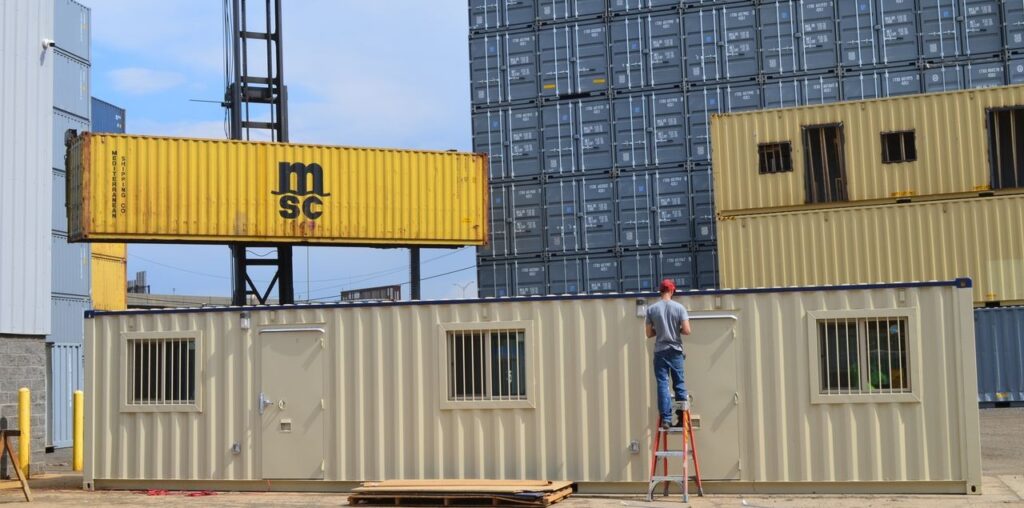Efficient logistics relies on consistency, scalability, and security. Across industries, businesses need transport systems that reduce risk, lower costs, and keep operations moving. Ship containers and cargo containers play a central role in making that possible. Initially designed for maritime freight, they now support movement across sea, land, and even static site storage. Their standard design and adaptability make them indispensable tools in modern supply chains.
How Ship Containers Have Standardized Global Transport
Before the use of containers, shipping was slow and labor-intensive. Goods were packed, loaded, and unpacked by hand. That process increased the risk of loss, damage, and delay. Today, shipping containers allow goods to move more quickly and safely. The standard 20-foot and 40-foot cargo container sizes ensure that containers fit consistently across trucks, ships, and trains. This uniformity simplifies planning, loading, and delivery.
Every container has a unique identification number. This makes tracking and inventory management more precise. Logistics, e-commerce, retail, and manufacturing businesses rely on this system to manage global distribution efficiently.
Advantages of Using Cargo Containers Across Industries
A cargo container has structure and mobility that make it a reliable option for multiple use cases:
- Durability: Built from heavy-duty steel, containers withstand rough weather, rough handling, and long transport routes.
- Security: Lockable doors and steel walls reduce the chance of theft or tampering.
- Scalability: Containers can be used as needed – one, ten, or a hundred – depending on shipment size or seasonal demand.
- Versatility: Other than for transport, containers can be converted into temporary storage, modular buildings, or mobile workspaces.
For example, a construction company may use shipping containers to move materials between sites. Retailers may use them to handle overflow inventory during seasonal surges. Even agriculture producers use containers to ship perishables with temperature control modifications.
The Link Between Cargo Containers and Operational Efficiency
Businesses looking to streamline their supply chains focus on reducing handovers and cutting downtime. Cargo containers help achieve both. Instead of offloading goods at each transport stop, containers can stay sealed from origin to destination. This reduces labor, improves security, and shortens delivery timelines.
Containers also enable better use of storage space in warehouses and on transport vehicles. Their stackable design allows for vertical storage on ships and in yards. For ports and logistics centers managing hundreds of containers per day, this space-saving feature translates to faster turnaround times and lower costs.
Tracking and Visibility
Modern supply chains depend on visibility. Many ship containers now include GPS trackers, smart seals, or IoT sensors. These tools allow logistics managers to monitor location, temperature, humidity, or impact in real time.
For example, a company shipping electronics across continents can use sensor-equipped cargo containers to ensure the goods stay within safe temperature limits. Alerts are sent immediately if the container is opened or exposed to shock. This level of control reduces product loss and gives businesses actionable data.
Environmental Considerations
Container reuse and recycling align with growing demand for more sustainable logistics practices. When properly maintained, a single cargo container can be reused for decades. Damaged containers can be repurposed into storage units, modular offices, or portable housing.
By extending their lifespan or repurposing them entirely, companies reduce waste and avoid the emissions of manufacturing new building materials or storage units. Shipping containers offer a practical alternative for businesses aiming to improve their environmental impact without compromising efficiency.
Planning for Container Use
Companies considering the use of shipping containers should plan for handling, placement, and storage. It’s important to:
- Ensure sites have level ground for container placement
- Confirm delivery access for forklifts or crane offloading
- Choose appropriate container grades based on use (e.g., one-trip, cargo-worthy, or wind/watertight)
- Consider additional insulation or lining for temperature-sensitive goods
These steps ensure containers perform well and meet the specific requirements of each use case.
Conclusion
Ship containers play a foundational role in global logistics. Their consistent sizing, strong construction, and versatility have made them essential to industries ranging from construction to e-commerce. Businesses rely on the cargo container to move goods efficiently, store materials securely, and support scalable transport strategies.
As the demand for fast, traceable, and flexible logistics grows, shipping containers will remain a core asset in commercial operations. For companies that move products nationally or internationally, using cargo containers strategically can improve speed, cut costs, and support long-term business growth.



